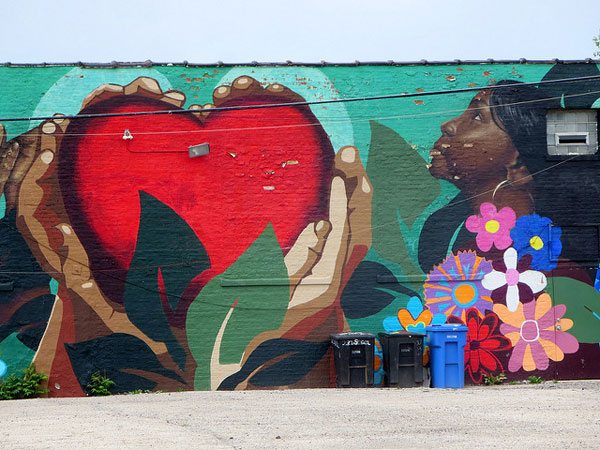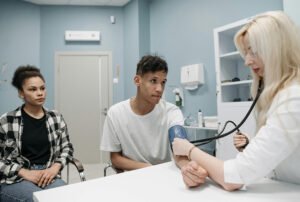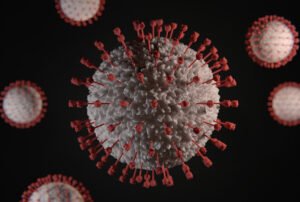
February 28, 2018; “Chicago Tonight,” WTTW
In Chicago, “West Garfield Park residents have a life expectancy of 69 years. In the Loop, just six miles away, the average life expectancy is 85 years,” notes Kristen Thometz of WTTW’s Chicago Tonight, a local public television show. But “a coalition of health care institutions and professionals, West Side residents and civic leaders hopes to cut in half that 16-year gap by 2030.”
The group, Thometz explains, has been working on health equity challenges since January 2017, but just launched officially as West Side United.
NPQ has written extensively on the importance of addressing the root causes of health, such as poverty and environmental factors—an approach often referred to as addressing the social determinants of health—to achieve better health outcomes. In Chicago, community members and area hospitals have come together to do so.
“We’re taking a whole new approach to addressing historical inequities on Chicago’s West Side, including social and structural determinants of health, things like structural racism, poverty and educational gaps,” said David Ansell, senior vice president of community health equity at Rush University Medical Center.
Darlene Hightower, associate vice president of community engagement and practice at Rush, notes that while physical health may appear as the tip of an iceberg, “there’s all this stuff going on underneath the water that’s bringing me the outcome at the top, and if we can’t get below and get to those things, then we’re never going to get the life expectancy outcomes that we want to see.”
Thometz reports that, “More than 480,000 people live in nine West Side neighborhoods: West Garfield Park, Austin, East Garfield Park, Humboldt Park, Lower West Side, Near West Side, West Town, North Lawndale and South Lawndale. These residents experience chronic diseases like diabetes, asthma, hypertension and infant mortality at rates much higher than the national average.”
A survey conducted by Sinai Community Health last year “found more than 40 percent of men and nearly 50 percent of women in South Lawndale reported being in fair or poor general health. Nationally, that figure was about 12 percent.”
Sign up for our free newsletters
Subscribe to NPQ's newsletters to have our top stories delivered directly to your inbox.
By signing up, you agree to our privacy policy and terms of use, and to receive messages from NPQ and our partners.
West Side United participants have decided to focus in four areas: 1) health and health care, 2) neighborhood and physical environment, 3) economic vitality, and 4) education. One program the group wants to expand is called West Side ConnectED. This program screens patients and connects them to social service providers. The same group is also piloting projects to hire community health workers who can help meet people’s health needs where they live.
As part of its physical development work, West Side United intends to organize an Impact Investing Fund to invest a minimum of $2.5 million in 2018 in housing and healthy food access.
Debra Wesley, who grew up on the West Side and is executive vice president for community health reach at Sinai Health System, said access to healthy food is crucial. “People shop at gas stations. There’s nothing healthy at the gas station, but that’s the option. It’s unacceptable…Our kids should not be eating all this. They need healthy food.”
Thometz notes that, “In addition to community members, nonprofits and government partners, West Side United is made up of six health systems that collectively hire nearly 6,000 employees annually and spend roughly $2.8 billion on supplies and services. To help build economic vitality on the West Side, the health systems plan to hire more West Side residents, including people who have barriers to employment, such as criminal records and long-term unemployment.”
“This isn’t just about entry-level (jobs). We want to see our folks thrive. We want to see folks not just make a living wage, but to make some money because we know those things ultimately impact the overall health and well-being of individuals and families,” says Hightower.
“In addition,” Thometz explains, “the six health systems plan to support local business through increased local purchasing and technical assistance and develop a small business accelerator grant pool with $100,000 this year.”
Lastly, the group aims to make more paid high school summer internships and college apprenticeships available “with the ultimate goal to connect all interested West Side students with enriching educational and pre-professional experience,” says Hightower. “I’m hoping I can look back (on 2018) and say the health institutions have hired 250 people. The health institutions opened up high school internships or college apprenticeships to 500 more kids.”
But Hightower knows the road ahead is hard. She says, “I’m hoping people will be patient with us because this is going to take some work. This isn’t going to happen overnight.”—Steve Dubb










